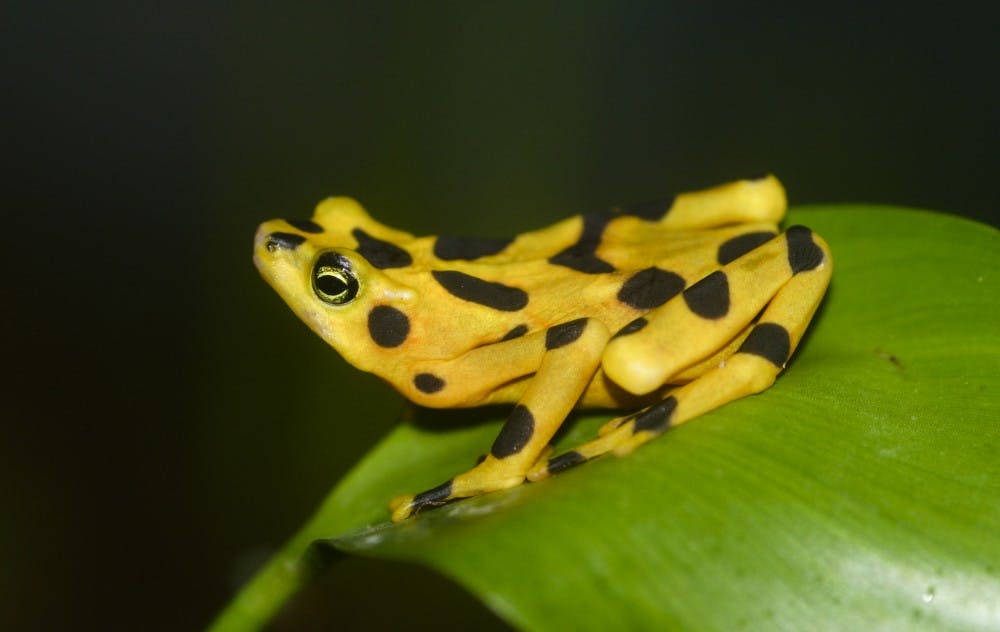The decline of many different forms of endangered species continues to be an issue worldwide. The Panamanian golden frog is native to the rainforests of Central America. While this species could easily be found in the rain forests of Panama as recent as 20 years ago, scientists noticed a sharp decline in the species’ population in recent years.
According to biologist Jamie Voyles, the Panamanian golden frog used to be so abundant that people could barely walk without stepping on one. However, in recent years, it is far more likely to encounter a sick or dead frog than a living one.
Panamanian golden frogs aren’t alone — it seems as if many of these once abundant amphibians in these tropical climates are growing extremely scarce. While scientists were initially baffled, they soon realized that nearly all of these dead frogs were covered in a skin fungus called Batrachochytrium dendrobatidis (Bd).
Studies published by the National Academy of Sciences have shown that these pathogens on the frogs’ skin can drastically alter the microbiome of the frogs’ skin, leading to fast and fatal periods of disease.However, to the surprise of many in the scientific community, the Panamanian golden frog as well as other once-declining species seem to be making a comeback.
At first, many scientists including Voyles had believed that this population recovery stems from aspects of the fungus itself, that maybe it had become less deadly with time. However, with further time and research, Voyles and her colleagues had a new theory.
She recently published a paper suggesting that the reason for the comeback may lie in the frogs’ shift in response rather than a change in the bacteria itself — in other words, the frogs are slowly becoming resistant to this type of bacteria.
Voyles initially found this theory to be unlikely due to the fact that the frogs had slightly over a decade to respond — a tiny amount of time by evolutionary standards.
Though Voyles still found that theory unlikely, she decided to test this hypothesis by measuring how much skin secretions of the Panamanian frogs in captivity at the Maryland Zoo slowed down the growth of fungus on the frogs in comparison to those of rebounding populations in the wild.
The differences between the two were striking; she saw that a few mutant frogs in the wild carried secretions that made them more resistant to Bd, and these frogs were able to live and reproduce. Some other potential causes of the population rebound may be the differed responses of different frogs’ immune systems as well as global warming effects that make it harder for the fungi to survive on the frogs.
Regardless, the story of the Panamanian frog and other amphibians who experienced recent declines in their populations may serve as a warning that extinction is a continuous threat to many species of animals.
Freshman Biomedical Engineering major Giang Hoang explained why she thinks looking out for endangered species is extremely important.
“Each and every one of the species on Earth contributes to ecological balance,” Hoang said in an interview with The News-Letter. “On top of all technology developments, it is extremely important to educate everyone about the importance of the issue in order to make a long-term impact to protect the environment as well as all the species living on Earth.”





